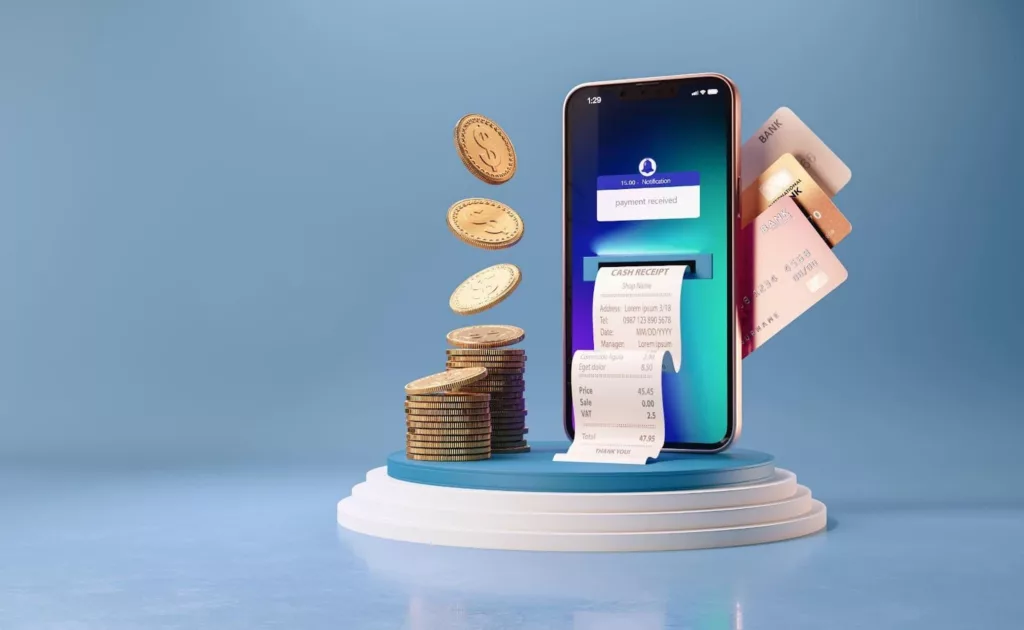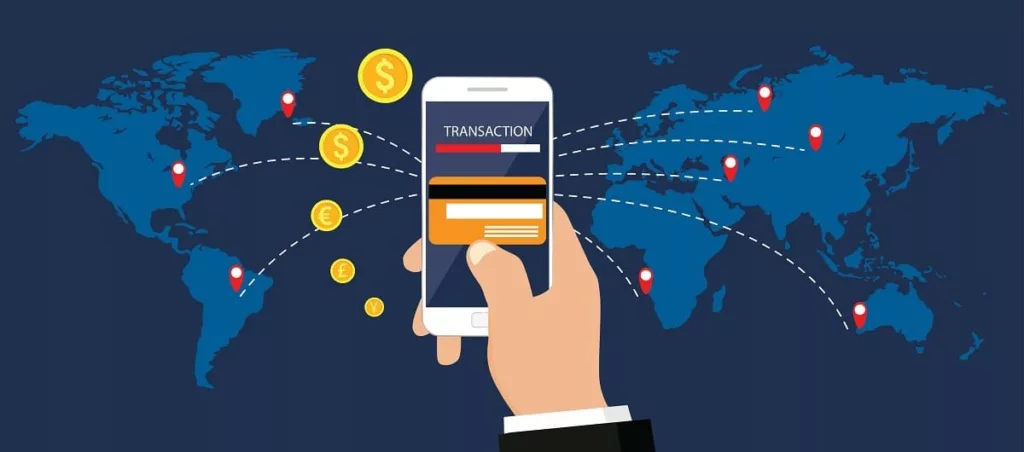Nowadays, monetization application is the end game of mobile app development. Whether you’re an indie developer or a large enterprise, understanding and implementing effective monetization strategies can significantly impact your app’s success. In this article, we explore the top mobile app monetization strategies for 2024, ensuring your app not only reaches its audience but also generates substantial revenue.

Table of Contents
What is App Monetization?
App monetization refers to the various methods and strategies developers use to generate revenue from a mobile application. With millions of apps available on various platforms, simply having a great app isn’t enough; you need a solid monetization strategy to make your app profitable. This process can involve in-app purchases, subscriptions, advertising, data monetization, and more. The goal is to convert app users into paying customers or generate income through their interactions with the app.
Why Should You Care About App Monetization Strategies?
Understanding and implementing app monetization strategies is crucial for several reasons that extend beyond merely generating revenue. These strategies play a pivotal role in ensuring the long-term success and viability of your app in a highly competitive market. Here’s why they matter:
Recouping Development and Marketing Costs:
Developing a mobile app involves significant investments in terms of time, money, and resources. From designing the user interface to coding, testing, and marketing, the costs can quickly add up. Without a solid monetization strategy, recouping these expenses can be challenging. A well-thought-out approach to monetization enables developers to offset these costs, ensuring that the app is financially sustainable from the outset. This financial return is vital not only for covering initial expenses but also for funding future updates, improvements, and expansions of the app.
For example, in 2022, iOS and Android users spent a cumulative $129 billion on mobile apps. iOS subscription revenues reached $17.1 billion, with iOS users making up 77% of that number, indicating a willingness to pay for apps. This indicates a significant opportunity for developers to recoup their investments through effective monetization strategies.
Creating a Steady Stream of Income:
A successful monetization strategy provides a reliable and ongoing source of revenue. Unlike one-time purchases, many monetization models—such as subscriptions, in-app purchases, or ads—offer recurring income, which can stabilize cash flow and make financial planning more predictable. This steady stream of income is essential for maintaining and enhancing the app, allowing developers to focus on innovation and growth rather than just survival. Consistent revenue also opens up opportunities for reinvestment in the app, such as adding new features, improving user experience, or expanding to new markets.
In 2020, in-app purchases totaled $111 billion, showing a 30.2% year-over-year growth. Additionally, advertising generated nearly $268 billion in 2022. These figures highlight the potential for creating a steady stream of income through various monetization models.
Enhancing User Engagement and Retention:
Beyond financial benefits, monetization strategies can also significantly impact user engagement and retention. For instance, reward-based models or in-app purchases can incentivize users to spend more time within the app, exploring its features and making repeat visits. Subscription models, on the other hand, encourage long-term relationships with users, who are more likely to stay engaged with the app to get their money’s worth. Moreover, when users invest financially in an app, they are more likely to remain loyal, as they have a vested interest in its continued success. This increased engagement and retention not only boosts revenue but also strengthens the app’s community and user base.
For instance, the freemium model, which is embraced by 83% of the top-grossing apps, allows users to access basic features for free while offering premium features for a fee. This model not only attracts a large user base but also encourages ongoing engagement and retention by providing continuous value.
Aligning Monetization with User Experience:
An important aspect of effective monetization strategies is their ability to align with the overall user experience. Poorly implemented monetization methods, such as intrusive ads or overpriced in-app purchases, can alienate users and lead to high churn rates. Conversely, strategies that are seamlessly integrated into the app, offering value without disrupting the user experience, can enhance satisfaction and loyalty.
For example, a freemium model that provides a generous free tier with optional premium features can attract a wide audience while still generating revenue from those willing to pay for additional value. By carefully considering how monetization impacts user experience, developers can create a balanced approach that maximizes revenue without sacrificing user satisfaction.
Adapting to Market Changes and User Preferences:
The mobile app market is dynamic, with trends and user preferences evolving rapidly. A flexible monetization strategy allows developers to adapt to these changes, experimenting with different models to see what resonates best with their audience. For example, as users become more privacy-conscious, data monetization might need to be replaced or supplemented with alternative revenue streams like subscriptions or in-app purchases. Being proactive and responsive to market shifts ensures that the app remains competitive and continues to generate revenue in the long term.
Building a Sustainable Business Model:
Ultimately, the goal of app monetization is to build a sustainable business model that can support the app’s growth and development over time. By carefully selecting and implementing the right monetization strategies, developers can ensure that their app remains profitable and relevant in a crowded market. This sustainability is crucial not just for the app itself but also for any associated business or brand, providing the financial stability needed to explore new opportunities, expand the product portfolio, and achieve long-term success.
Top 7 Mobile App Monetization Strategies for 2024

When it comes to monetization, the best strategy depends on your app’s niche and audience. Experiment and adapt to find what works best for you! Here are seven approaches to consider:
1. Data Monetization
Data monetization is a strategy where developers leverage the data collected from users to generate revenue. This can include selling anonymized user data to third parties or using the data to enhance advertising strategies within the app. With growing concerns about data privacy, it’s essential to handle user data responsibly and transparently, ensuring compliance with regulations like GDPR.
2. Rewards
Reward-based monetization strategies involve offering users incentives, such as in-app currency or extra features, in exchange for specific actions like watching ads or completing surveys. This approach not only generates revenue but also encourages user engagement and loyalty. It’s a win-win situation where users feel they are getting something valuable in return for their time.
3. Freemium
The freemium model offers the app for free with the option for users to purchase premium features or content. This strategy is highly effective for apps with a large user base, as it allows developers to attract users with the free version while monetizing through premium upgrades. The key to success with freemium is to offer enough value in the free version to attract users while reserving the most desirable features for paying customers.
4. Subscriptions
Subscription-based monetization is particularly popular for apps that provide ongoing value, such as content streaming services, fitness apps, or productivity tools. Users pay a recurring fee, usually monthly or annually, to access premium content or features. This model provides a predictable revenue stream and fosters long-term relationships with users, making it a highly sustainable monetization strategy.
5. Sponsorship
Sponsorship involves partnering with brands or companies that want to reach your app’s user base. In exchange for financial support, you can offer in-app placements, sponsored content, or other promotional opportunities. This strategy can be particularly lucrative if your app has a highly targeted or niche audience that aligns with the sponsor’s target market.
6. Advertising
Advertising is one of the most common app monetization strategies. Developers can integrate ads into their app in various forms, such as banner ads, interstitial ads, video ads, or native ads. To avoid disrupting the user experience, it’s crucial to choose the right type and placement of ads. Effective use of ads can generate significant revenue, especially for apps with a large and active user base.
7. In-App Purchases
In-app purchases allow users to buy virtual goods, additional content, or premium features directly within the app. This strategy is particularly effective for gaming apps, where users can purchase items to enhance their gameplay experience. To succeed with in-app purchases, it’s essential to strike a balance between offering valuable paid items and maintaining a fair and enjoyable experience for all users.
Which App Monetization Model is the Best Fit?
Choosing the right monetization strategy for your app depends on various factors, including your target audience, app category, and long-term goals. For instance, if you have a gaming app with a highly engaged user base, in-app purchases and reward-based monetization might be the best fit. On the other hand, a productivity app might benefit more from a subscription model. It’s crucial to consider your app’s unique value proposition and how users interact with it when deciding on a monetization model.
Metrics for Measuring the Effectiveness of App Monetization Models
To ensure your monetization strategy is effective, it’s essential to track key performance metrics. These metrics include:
- Average Revenue Per User (ARPU): This metric measures the average revenue generated per user and is crucial for understanding the profitability of your app.
- Customer Lifetime Value (CLTV): CLTV estimates the total revenue you can expect from a user over the course of their relationship with your app.
- Conversion Rate: This metric tracks the percentage of users who convert from free to paying customers or who make in-app purchases.
- Retention Rate: Retention rate measures how well your app retains users over time, which directly impacts revenue.
- Churn Rate: Churn rate is the percentage of users who stop using your app over a given period. A high churn rate can indicate issues with user satisfaction or the effectiveness of your monetization strategy.
By regularly analyzing these metrics, you can make informed decisions to optimize your app’s monetization strategy and ensure long-term success.
Conclusion
With fierce competition among mobile applications, it is essential for success to know how to choose the right mobile app and monetization strategy. Whether you opt for data monetization, advertising, in-app purchases, or a combination of strategies, the key is to align your approach with your app’s goals and your users’ needs. At Vinova, we specialize in helping developers and businesses implement effective monetization strategies that maximize revenue while enhancing user experience. Contact us today to learn how we can help you turn your app into a profitable venture.